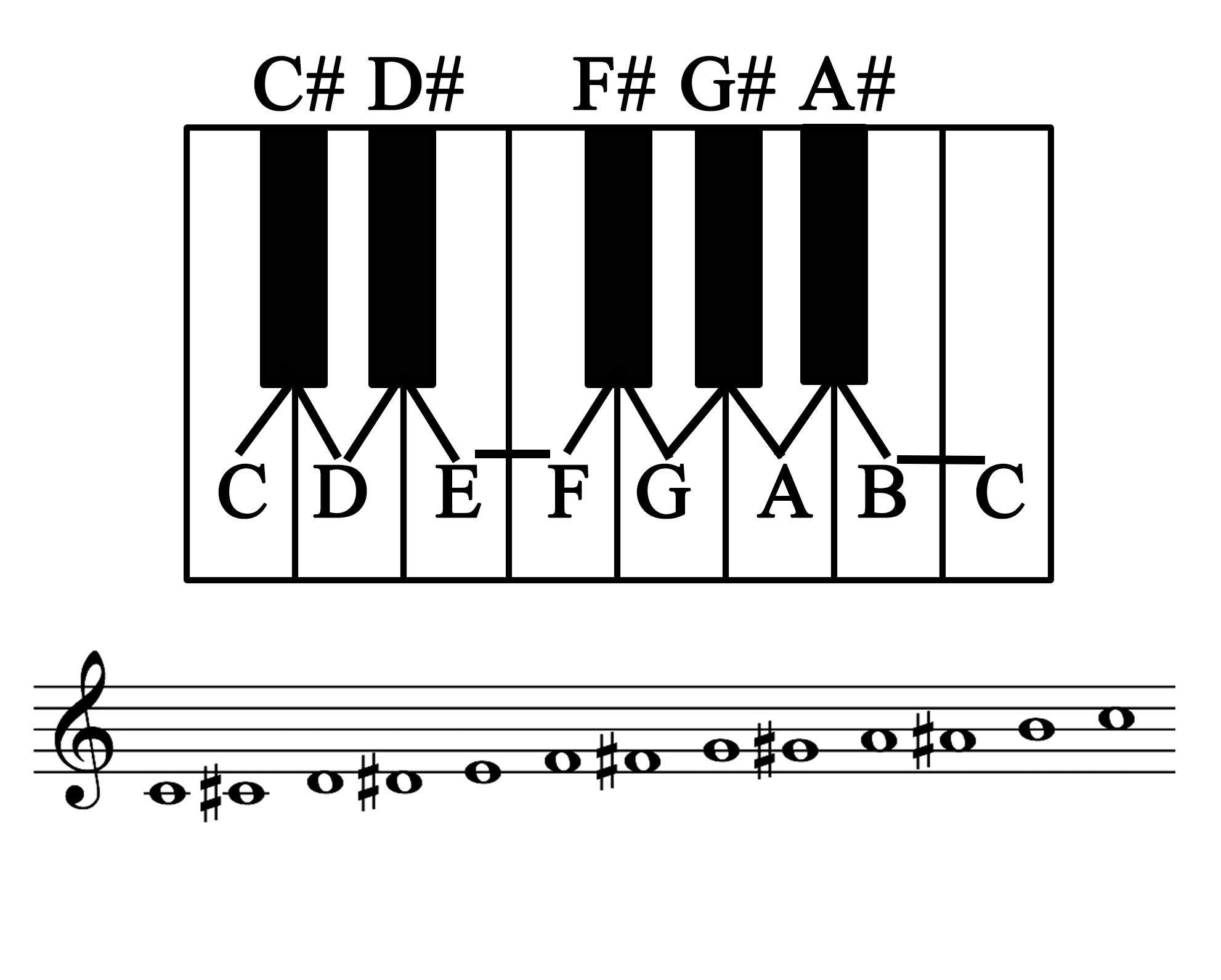3.1 Intro to Scales and the Chromatic Scale: Tutorial
Scales
Scales are an arrangement, in ascending or descending order, of the pitch material upon which a composition is based. Scales are the basic building blocks of music. Each type of scale has a specific patterns of steps. We will be exploring the chromatic scale, major and minor scales, and modal scales in this unit.
Chromatic Scales
The chromatic scale is made up of half steps. It contains all twelve pitches of the octave. The name chromatic comes from the Greek word “chroma”, meaning scale of many colors. Before equal tuning, enharmonic notes did not exist. As a result, each note had a different pitch and timbre, so when played all in a row in a chromatic scale you could hear the different colors of each pitch. See the example of a chromatic note starting on C4 below.

Chromatic Scales in Music
Chromatic scales are used in a variety of ways in music. They add elements of interest, color, and emotion to a melody and harmony as non-chord tones without changing the key. They create and heighten tension and motion as they drive toward the final note of the scale and are often used to drive towards a cadence. They can help transition to a new tonality, key, or section in music by introducing notes outside of the key. They can be used to create a specific character in the music. They can also be used to display virtuosity as a performer, especially during a cadenza.
- Chopin’s Op.25 No.6 (Thirds) Etude
- Adds elements of interests, color and emotion to both melody and accompaniment
- Used to drive toward final note of the scale
- Mozart, Fantasia in D minor (at 3:20)
- Display of virtuosity during cadenza
- Used to transition to a new section
- Flight of the Bumblebee (arr. Rachmaninoff)
- Creates a specific character: a busy bee
- Displays virtuosity
Chromatic scale notation
A chromatic scale is written using half steps. Traditionally, sharps are used as accidentals on the way up, and flats are used on the way down. However, chromatic scales that start on a flat note, like Bb, use flats both ascending and descending. Make sure to apply natural signs in order to cancel out any accidentals that came before as needed. Also remember the half step that naturally occurs between E and F and between B and C.
Chromatic scale on C:

Chromatic scale on Bb:

Look at the music you are currently studying or would like to learn. Can you find a chromatic scale or fragment? How is it used in the music? Is it used to heighten tension and drive toward the next note or cadence? Does it help to transition to a new key or section? Does it lend a specific quality to the music? It is used to make the piece more virtuosic? See how many instances of a chromatic scale you can find, and pay attention to the specific sound of the scale.

